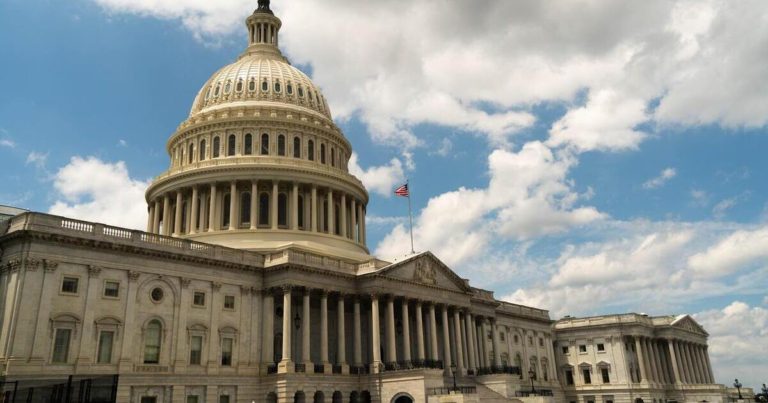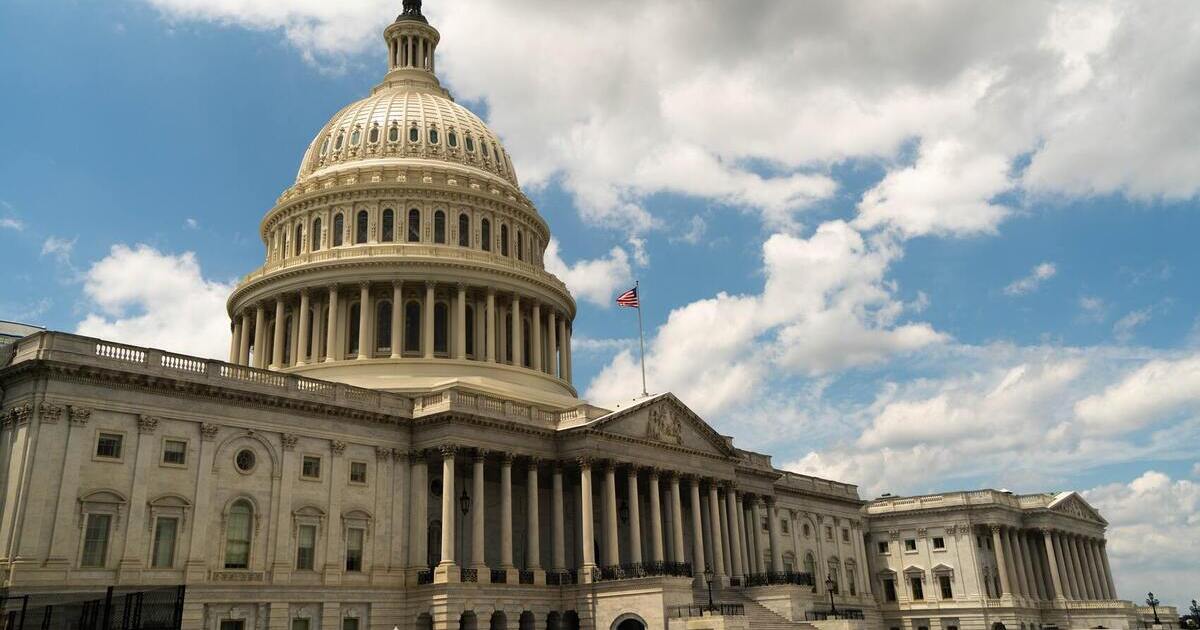After months of extensive debate, the “One Big Beautiful Bill” (OBBB) Act was officially passed by Congress on July 3 and officially signed into law by President Trump on July 4. The bill is the product of many compromises and negotiations between the House and Senate and includes most of the Republican legislative agenda.
Summary
This bill will have major implications for health care, higher education, and tax policy. The OBBB also has impacts on other areas, such as energy and immigration reform.
While Congressional Budget Office (CBO) estimates are never completely accurate, the CBO’s analysis shows the bill will result in fewer people enrolled in Medicaid and reduced Medicaid revenues to states. If these projections prove accurate, the bill could place greater financial pressures on states and reduce Medicaid reimbursements to providers. It also means that providers will face new challenges verifying Medicaid enrollment and potentially seeing an increase in uninsured patients.
Further, the education policies that limit student loan amounts and eligibility will make it more difficult for students to finance their undergraduate, graduate or professional (e.g., medical school) education. This could disrupt the pipeline of new clinicians and exacerbate existing clinical workforce challenges.
Lastly, individuals and businesses will continue benefiting from the 2017 Tax Cuts and Jobs Act’s tax policies as well as those provisions that were expanded under this bill.
Analysis
Medicare payments to physicians – The bill includes a one-time 2.5% increase to the Medicare Physician Fee Schedule in 2026. However, the more significant proposal to permanently tie physician reimbursements to the Medicare Economic Index (MEI) was left out of the final legislation. While the 2.5% increase offers short-term relief, it does not address the long-term instability of Medicare payment rates. This leaves physicians vulnerable to future payment cuts and continued uncertainty around sustainable growth.
Medicaid provider taxes and reimbursement caps – The bill lowers the maximum provider tax rate from 6% to 3.5% for states that expanded Medicaid under the Affordable Care Act (ACA). This reduction will be phased in starting in 2028, with a 0.5% decrease each year until the maximum provider tax rate is 3.5%. This change will reduce federal Medicaid revenues for those states. Meanwhile, non-expansion states will have their current provider tax rates frozen.
Importantly for providers, the legislation caps Medicaid reimbursement rates relative to Medicare. Some states subsidize Medicaid payments to providers or facilities. This policy will cap total Medicaid reimbursements (including any subsidies) at the Medicare rate.
Expansion states will be limited to paying hospitals up to 100% of Medicare rates, while non-expansion states can reimburse up to 110% of Medicare rates. The lower cap for expansion states reflects that they already receive enhanced federal funding, with the federal government covering 90% of the costs for the expansion population.
This introduces new revenue constraints and could have downstream impacts on physician payments.
Medicaid work requirements and enrollment changes – The legislation imposes Medicaid work requirements for able-bodied adults aged 19-64 and increases eligibility redeterminations to at least every six months instead of annually. This includes beneficiaries with dependents who are 15 years and older (previous versions of the bill excluded Medicaid-qualifying individuals with dependents). The bill includes a mechanism for states to request an extension of the work requirement effective date if they can demonstrate meaningful progress toward implementation. The bill also authorizes $100 million in federal grants to states to help implement the new work requirement policy.
The new work requirements will go into effect in 2026.
The CBO projects this and other Medicaid policies will result in upwards of 10 million people losing Medicaid coverage. Many of these people would have access to alternative coverage but could choose not to enroll. Allergy practices should prepare for potential coverage disruptions in Medicaid populations, which could potentially result in confusion over insurance eligibility, higher denial rates, and an increase in uninsured patients.
Medicaid expansion population – Many of the provisions are focused on the Medicaid expansion population. Under the Affordable Care Act (ACA), states have the option to expand Medicaid coverage to people earning between 100-138% of the federal poverty level (FPL). The bill will require $35 per-service cost-sharing for many services for the expansion population. Cost-sharing remains capped at 5% of total income. The bill also reduces the federal match rate for the expansion population if a state offers Medicaid-style health coverage for non-citizens and ends a higher federal match that is intended to incentivize new Medicaid expansion states.
Rural and safety net health fund – In response to concerns about negative financial impacts on rural and safety net providers, the bill creates the $50 billion Rural Health Transformation Program. Funding will be distributed in annual $10 billion increments between 2026 and 2030.
States will be required to submit an application by Dec. 31, 2025 to be eligible, which is to contain a ‘detailed rural health transformation plan.’ This plan is expected to include ways that funding will be used to improve access, outcomes, partnerships, technology utilization, economic opportunity, etc.
Fifty percent of appropriated funds will be equally distributed amongst all states with an approved application, while the remaining 50% will be distributed at the CMS Administrator’s discretion, amongst at least 25% of the states with an approved application. The Administrator is to consider the percentage of the state in a rural census tract, the proportion of rural facilities in the state relative to the number of facilities across the country, and the “situation of hospitals in the State.”
States can provide this funding to Critical Access, Sole Community, Medicare-dependent, small rural, low-volume, rural emergency, and other hospitals in rural areas, as well as Rural Health Clinics, Federally Qualified Health Centers, community-mental health centers, health centers receiving section 330 grants, and opioid treatment programs and certified community behavioral health clinics in rural census tracts.
It is not clear if this fund will fully offset losses these facilities incur due to other provisions in the bill.
ACA premium assistance tax credits – The bill does not extend a policy that provides premium assistance for people who purchase Affordable Care Act (ACA) health plans. The ACA caps income-based eligibility for premium assistance at 400% of the federal poverty level (FPL). Since the COVID-19 pandemic, Congress has temporarily eliminated the 400% of FPL cap and also changed the formula to provide more generous subsidy amounts. H.R.1 does not extend this policy and will let it expire after the 2025 plan year.
Pharmacy Benefit Manager (PBM) policies – The bill prohibits PBMs from using spread pricing in Medicaid. Spread pricing is where PBMs charge a state or health plan more than what the PBM pays pharmacies. PBMs will be required to pass through all savings to states and health plans. Any form of spread pricing would not be allowable for purposes of claiming federal matching funds.
Orphan drugs – The Inflation Reduction Act (IRA) created the Medicare Drug Price Negotiation Program. Under the IRA, rare disease drugs with single indications were excluded from the negotiating process. The pharmaceutical industry has long advocated for this to be amended to exclude drugs with just a few indications from negotiation eligibility. This change will incentivize drug manufacturers to seek out additional indications for their drugs.
This modification was included in the final version of the bill –now drugs treating “one or more rare diseases or conditions” are now exempt from Medicare drug price negotiations.
Higher education policies
Taxing college and university endowments – The bill includes a significant tax increase for college and university endowments, which are currently taxed at 1.4%. The bill will increase this tax rate on a sliding scale based on endowment size up to a maximum of 8% for endowments valued over $2 billion.
Student Loans – The bill:
- Caps total federal financial assistance for higher education at the median cost based on the national costs for similar programs.
- Ends the Grad PLUS student loan program on July 1, 2026 but includes a three-year grace period for students already in the program.
- Sets a new maximum annual loan limit for unsubsidized loans disbursed on or after July 1, 2026, to the median cost of students’ program of study.
- Sets aggregate loan limits at $100,000 for graduate students and $200,000 for students in professional programs. Students enrolled in professional programs will additionally be capped at $50,000 in federal student loans annually.
- Requires undergraduate students to exhaust their unsubsidized loans before parents can utilize Parent PLUS to cover their remaining cost of attendance.
- Establishes an aggregate limit for Parent PLUS loans of $65,000 for parents per dependent child. The bill includes a three-year exception for students who were enrolled in a program of study as of June 30, 2026.
- Establishes new student loan repayment parameters for loans issued on or after July 1, 2026.
- Sets new income requirements for determining Pell Grant eligibility.
- Requires institutions to reimburse the federal government for a share of student loans based on metrics on how their graduates’ earnings compare to people without degrees. This is different from the House’s version which would have required institutions to reimburse the government for a share of unpaid student loans from students who were enrolled at that institution.
- Bans new federal student loans from paying for graduate programs where the majority of former students earn less than the median bachelor’s degree recipient in the same field in the same state.
Tax policy
SALT Deduction (and its impact on Medicaid changes) – One new tax policy will increase the State and Local Tax (SALT) deduction cap from its current $10,000 limit (for individual and joint filers) to $40,000 up to a $500,000 income limit for the next five years. The SALT deduction allows individuals to deduct state taxes from their federal taxes up to the deduction cap.
Raising this cap from was a key priority for a group of moderate Republicans who represent districts with high state taxes. Importantly, raising the deduction cap substantially reduces the savings achieved by the reconciliation bill.
New tax policies – The bill extends the 2017 tax policies from the Tax Cuts and Jobs Act such as changes to individual and corporate income tax rates, estate tax limits, and the child tax credit amount.
Specific policies include:
- Increasing the standard deduction from $12,000 to $15,750 for individual tax filers and from $18,000 to $23,625 for joint tax filers.
- Extending the personal income tax brackets from the 2017 Tax Cuts and Jobs Act.
Other notable new tax policies include:
- Permanently extending the 20% tax rate for pass-through business deduction for qualified business income (QBI). The bill also increases the $50,000 (non-joint returns) and $100,000 (joint returns) deduction caps to $75,000 and $150,000, respectively.
- Permanently allows immediate 100% business deduction for qualified property rather than spacing the deduction out over time.
- Create a new deduction of up to $12,500 ($25,000 in the case of a joint return) for qualified overtime compensation.
- Create a new deduction of up to $25,000 for tips.
- Providing $6,000 tax deductions for people aged 65 or older, which is higher than the $4,000 included in the initial House-passed version of the bill. An income limit is the only real criteria. The deduction begins to phase out for people 65 and older earning above $75,000 (individual) or $150,000 (joint). It phases out fully for people earning above $175,000 (individual) or $250,000 (joint). The deduction is available from 2025-2028. Importantly, it is available in addition to the standard deduction.
- Creating tax-free savings accounts for children, called Trump accounts with a $5,000 annual contribution limit. The government will deposit up to $1,000 per child when these accounts are established for children born between 2025 and 2028.
- Allow Health Reimbursement Arrangement (HRA) accounts to purchase Affordable Care Act (ACA) health insurance plans.
- Corporations will need to contribute at least 1% of their income towards charitable deductions in order to earn the full tax deduction for charitable giving.
Artificial intelligence – The initial version of the bill contained a provision that would have severely limited states’ ability to regulate artificial intelligence for 10 years. This provision was removed from the bill on a 99-1 vote in the Senate.
Impacts on health care coverage and federal deficit – The CBO estimates that more than 11.8 million people will lose health care coverage. Further, the bill does not extend enhanced eligibility for ACA premium assistance before these policies expire at the end of the year. This could result in an additional 4 million people losing coverage through the ACA.
The bill was originally projected to add $3.3 trillion to the federal deficit over the next decade.
However, the Senate passed an amendment to use a “current policy baseline.” This approach uses the 2017 tax cuts as the baseline rather than the pre-2017 policy used by the $3.3 trillion CBO score.
The CBO subsequently released an updated score based on current policy baselines, showing the bill will reduce the federal deficit by an estimated $400 billion over ten years.
This is notable because a net deficit reduction means the bill will not trigger automatic 4% cuts to Medicare payments. H.R.1 does not waive the statutory PAYGO requirement. PAYGO requires Congress to offset the cost of bills that add to the federal budget deficit. Had the bill added to the deficit as originally projected, the absence of a PAYGO waiver in the bill would have resulted in automatic 4% cuts in Medicare payments as one of the offsets.
The Advocacy Council – ADVOCATING FOR ALLERGISTS AND THEIR PATIENTS.




